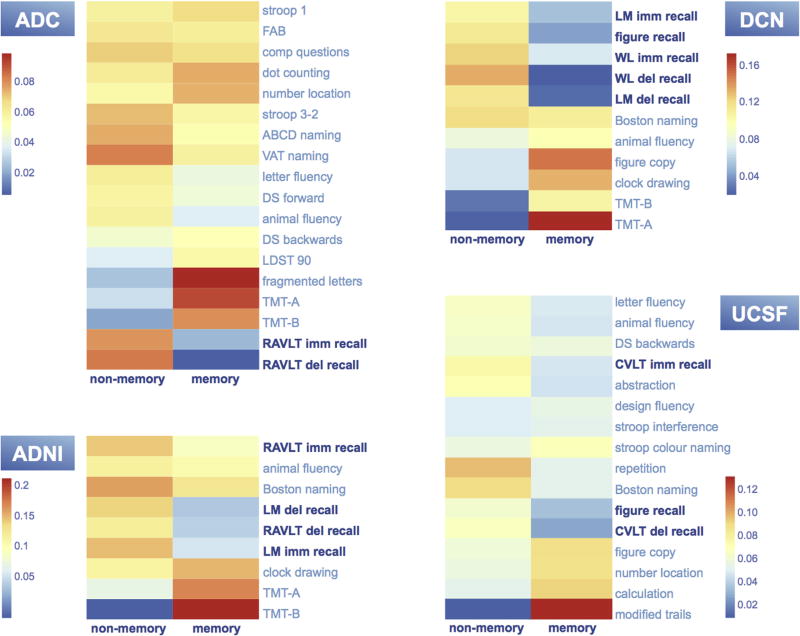Fig. 2.
Memory tests (indicated in dark blue). Each row represents one neuropsychological test. The two columns represent the two found neuropsychological components. The warmer the color, the higher the test loads to the component when test scores are high (relatively spared cognition); the colder the color, the lower the test loads to the component when test scores are high (relatively impaired cognition). Interpretation: in each cohort, one component is associated with relative impairment of memory tests, therefore called the memory component. The other component is associated with relative impairment of nonmemory functions, therefore called the nonmemory component. In all cohorts, the optimal number of test clusters was two. Abbreviations: ABCD, Arizona Battery for Communication Disorders of Dementia; ADC, Amsterdam Dementia Cohort; ADNI, Alzheimer’s Disease Neuroimaging Initiative; comp questions, comparative questions; CERAD, Consortium to Establish a Registry for Alzheimer’s Disease; CVLT, California Verbal Learning Test; DCN, German Dementia Competence Network; DS, Digit Span; FAB, Frontal Assessment Battery; LDST, Letter Digit Substitution Test; LM, CERAD Logical Memory; RAVLT, Rey Auditory Verbal Learning Test; TMT, Trail Making Test; UCSF, University of California, San Francisco; VAT, Visual Association Test; WL, CERAD Word List.

